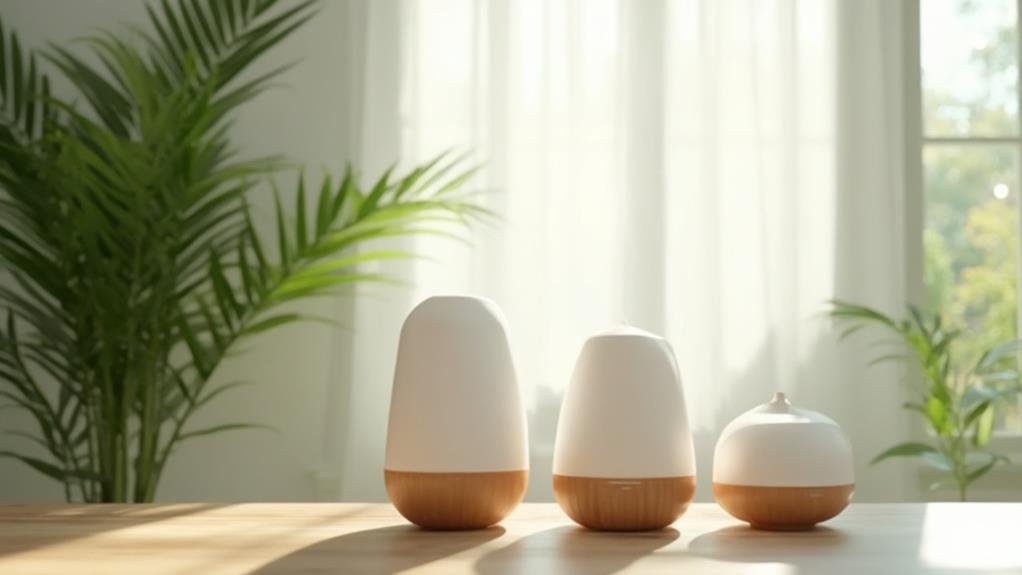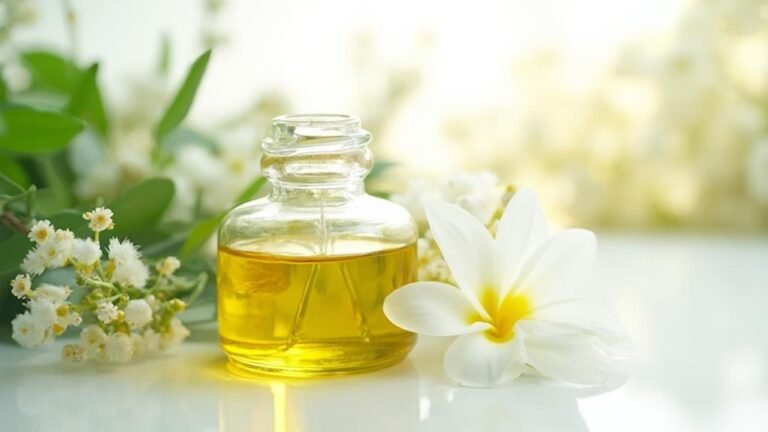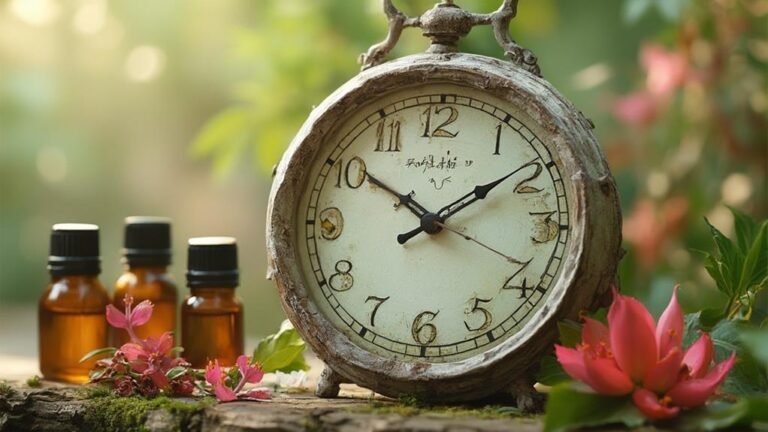Choosing the Best Size for Your Essential Oil Diffuser
A diffuser with a tank capacity of 100-200 ml is generally recommended for a bedroom. The best size for an essential oil diffuser depends on your room size and desired fragrance intensity.
Understanding Essential Oil Diffuser Sizes

Choosing the right essential oil diffuser size is crucial for maximizing the therapeutic benefits of aromatherapy. The size of your space plays a significant role in determining the most effective diffuser for your needs.
For insights into how ventilation can affect diffusion, visit our article on how essential oils behave in various conditions.
Factors to Consider When Choosing a Diffuser
- Room size (square footage)
- Desired scent intensity
- Noise level preference
- Portability and design preferences
- Diffuser capacity (measured in milliliters)
It’s important to note that a larger capacity doesn’t always mean better performance.
Some diffusers have more efficient designs that can effectively distribute essential oils in larger spaces with smaller tank sizes.
Small Space Diffuser Needs
For small areas like bedrooms and bathrooms (50-100 square feet), consider the following:
- Tank capacity: 100-200 mL
- Adjustable misting settings
- Auto-shutoff features
- Whisper-quiet operation
- Compact design with built-in fans or 360-degree output
- Advanced ultrasonic technology for fine mist creation
These features ensure optimal fragrance distribution without overpowering the space, creating a peaceful atmosphere that enhances focus and overall wellness.
Choosing for Medium Sized Rooms
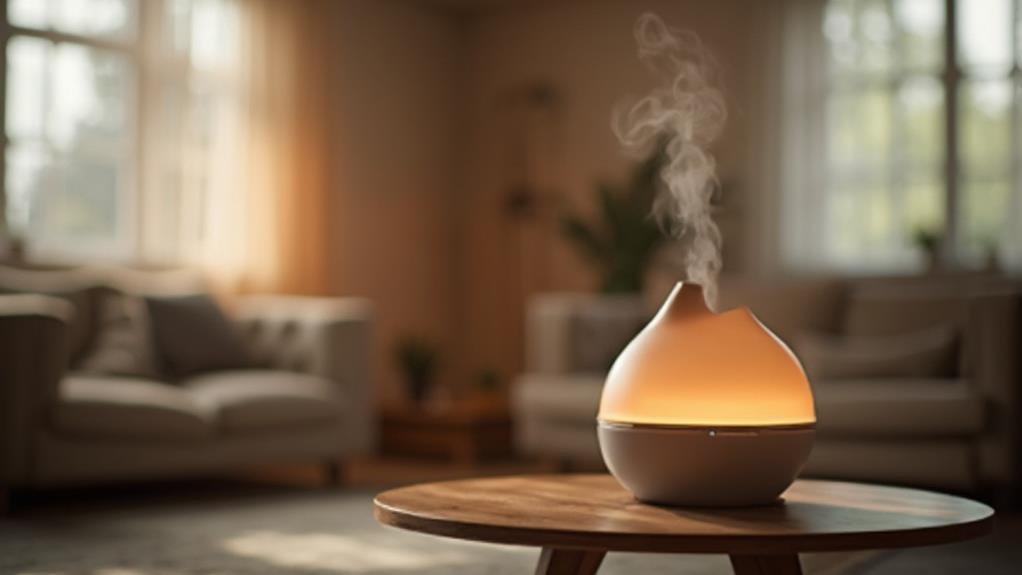
For living rooms or larger offices (150-300 square feet), opt for diffusers with:
- Moderate to high output (20-40 ml/h)
- Adjustable misting levels
- Ultrasonic or nebulizing technology
Ultrasonic diffusers use high-frequency sound waves to create a fine mist, while nebulizing diffusers use compressed air to atomize essential oils. Both types offer efficient and effective diffusion for medium-sized rooms.
Large Area Diffusion Solutions
For open-plan offices or spacious homes (over 300 square feet), consider:
- Higher mist output diffusers
- Larger tank capacities
- Advanced nebulizing diffusers (can cover areas up to 1,000 square feet or more)
When choosing a large area diffusion solution, prioritize a device that balances technical performance with therapeutic efficacy to ensure consistent and potent aroma distribution. Additionally, you may read about safety considerations with essential oils to ensure your usage is both beneficial and safe.
Measuring Room Size Matters
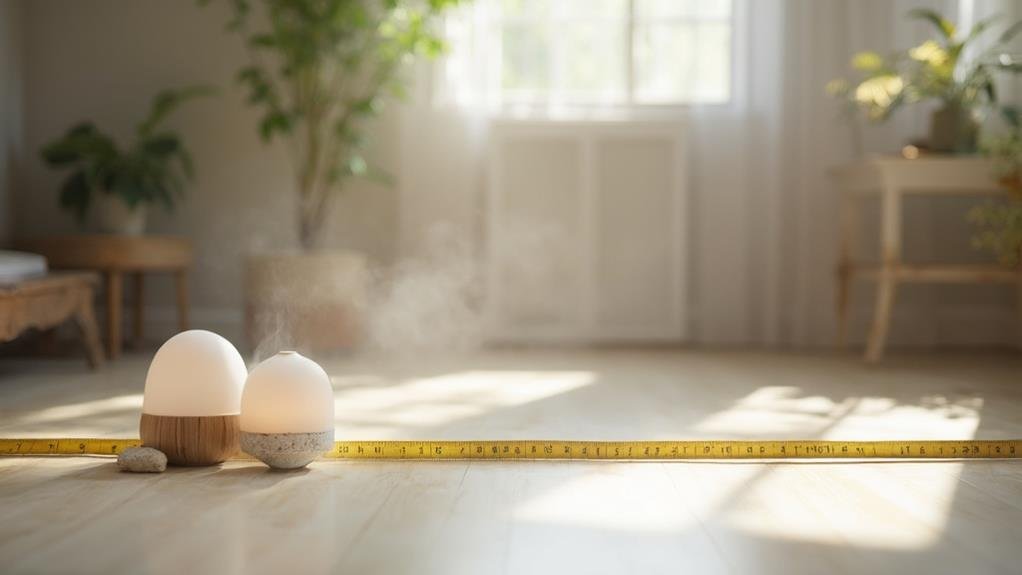
Accurate room measurement is crucial for selecting the right diffuser. To calculate square footage:
- Measure the length and width of the room in feet.
- Multiply these numbers together.
- Include adjacent spaces if desired.
- Consider obstacles like furniture and partitions that may affect airflow and the diffuser’s ability to distribute essential oils evenly.
Consider Diffuser Output Capacity
Output capacity, measured in milliliters per hour (mL/h), affects the therapeutic concentration of essential oils in the air. Use these guidelines:
- 1-3 mL/h per 100-200 square feet for average spaces
- 100-200 mL/h for small rooms or personal spaces
- 400-600 mL/h or more for larger spaces or areas with poor ventilation
Balance output capacity with adjustable settings, noise level, power consumption, and design aesthetics for optimal results.
Frequently Asked Questions
Can I Use a Large Diffuser in a Small Room?
Yes, but adjustments may be necessary:
- Start with a low mist output setting.
- Begin with shorter runtimes.
- Monitor humidity levels.
- Adjust diffuser placement for optimal distribution.
Are Essential Oil Diffusers Suitable for People With Allergies?
Approach with caution if you have allergies. To minimize reactions:
- Choose hypoallergenic essential oils.
- Monitor usage and adjust as needed.
- Consult a healthcare professional or certified aromatherapist.
Can I Leave an Essential Oil Diffuser on All Night?
It can be safe if the device is designed for continuous use. To ensure safe and effective use:
- Choose a diffuser designed for long-lasting operation.
- Follow manufacturer guidelines for usage and oil amounts.
- Select calming essential oils for sleep (e.g., lavender, chamomile).
Are Ultrasonic Diffusers Better Than Nebulizing Diffusers?
Each type has its advantages:
- Ultrasonic diffusers: Quieter operation, adds moisture to the air.
- Nebulizing diffusers: Stronger oil concentration, no water mist.
Can I Use Tap Water in My Essential Oil Diffuser?
Using tap water is not recommended due to impurities that can affect diffuser performance and oil properties. Use distilled water instead to preserve quality and effectiveness.
Conclusion
Choose the right essential oil diffuser size by considering your room’s square footage and the diffuser’s output capacity. Match the diffuser size to your room size for optimal results:
- Small rooms (100-200 sq. ft.): Small diffusers with low output capacity.
- Medium rooms (200-400 sq. ft.): Medium diffusers with moderate output capacity.
- Large rooms (400-600 sq. ft.): Large diffusers with high output capacity.
By carefully selecting the appropriate diffuser size, you can create a personalized aromatherapy experience that enhances your well-being and transforms your space. For more information on effective oil usage, consider checking out how mixing essential oils with carrier oils like Vitamin E can improve your aromatherapy routine.
Sources:

